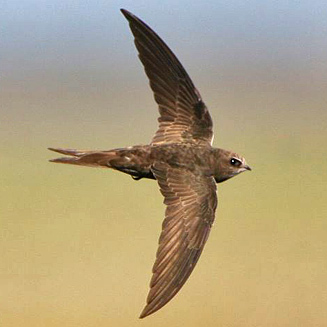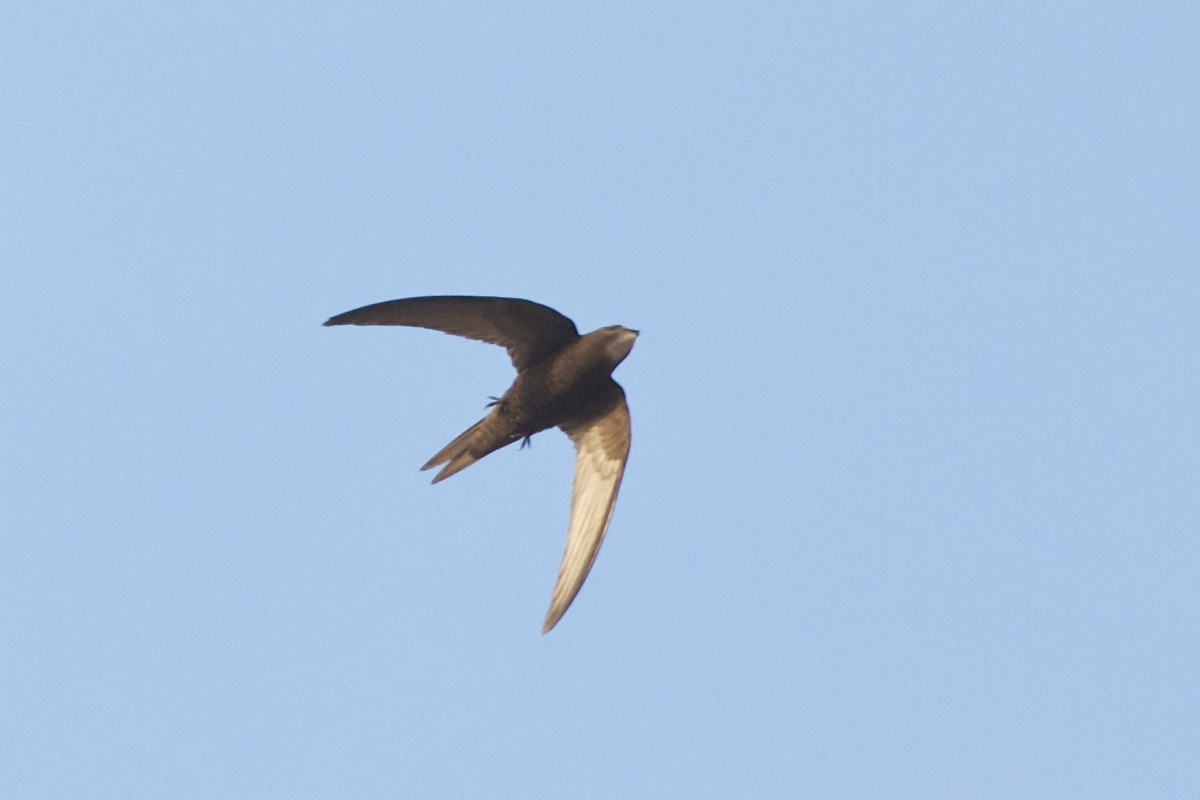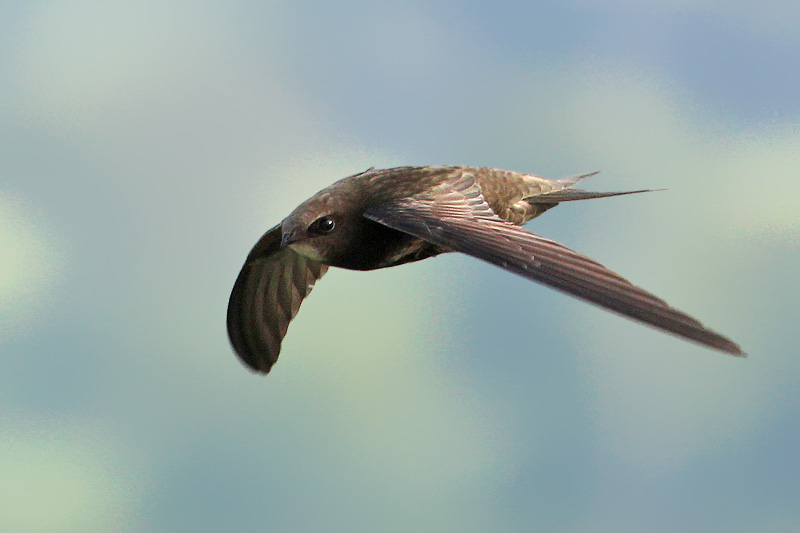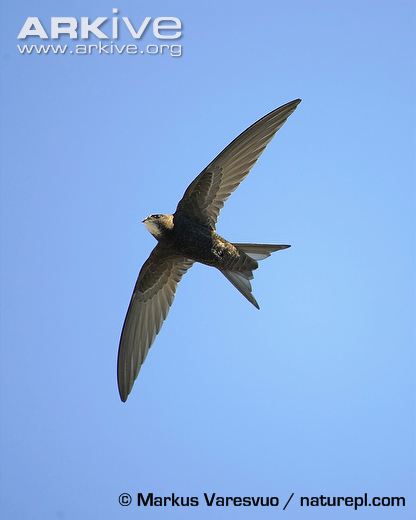
Apus apus
SUBFAMILY
Apodinae
TAXONOMY
Hirundo apus Linnaeus, 1758, Sweden. Two subspecies.
OTHER COMMON NAMES
English: Eurasian, European, northern swift; French: Martinet
noir; German: Mauersegler; Spanish: Vencejo Comъn.
PHYSICAL CHARACTERISTICS
6.1–6.5 in (16–17 cm); 1.3–1.9 oz (36–52 g). Juvenile similar to
adult; sexes alike. Overall black-brown plumage with small, offwhite
throat patch.
DISTRIBUTION
Western Europe to eastern Asia and from northern Scandanavia
and northern Siberia to North Africa, Himalayas, and
central China; winter in southern Africa. Accidental in
Spitzbergen, Iceland, Bermuda, and Seychelles.
HABITAT
Occurs in all but driest parts of extensive breeding range.
Nests in woodpecker holes, hollow trees, and natural cliffs as
well as buildings and other manmade structures.
BEHAVIOR
Regularly makes dashing flights accompanied by its drawn-out
rattling screams. During prolonged cold weather, adults may
temporarily abandon the chicks and make lengthy flights to
warmer, food-rich areas. Annual molt is usually delayed until
they are on the wintering grounds.
FEEDING ECOLOGY AND DIET
Aerial insects and spiders taken on the wing.
REPRODUCTIVE BIOLOGY
Lay from one to four eggs, most commonly two, and incubation
takes about 19–20 days; fledging takes an additional 27–45
days. Nesting success varies from 58% to 65%.
CONSERVATION STATUS
Most populations seem to be healthy and not in need of particular
conservation efforts.
SIGNIFICANCE TO HUMANS
None known.
Other popular Animals
Photo Gallery of - Common swift




 Animalia Life
Animalia Life